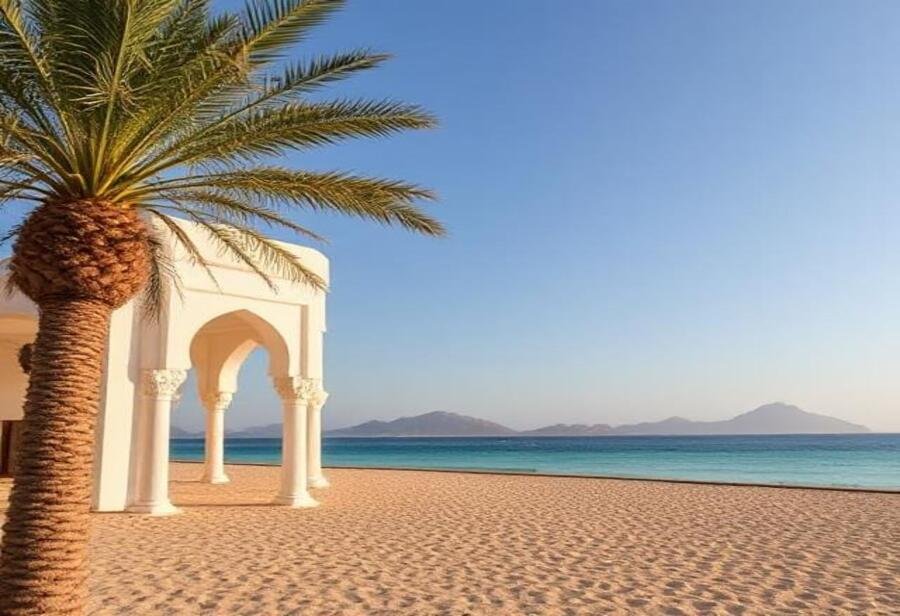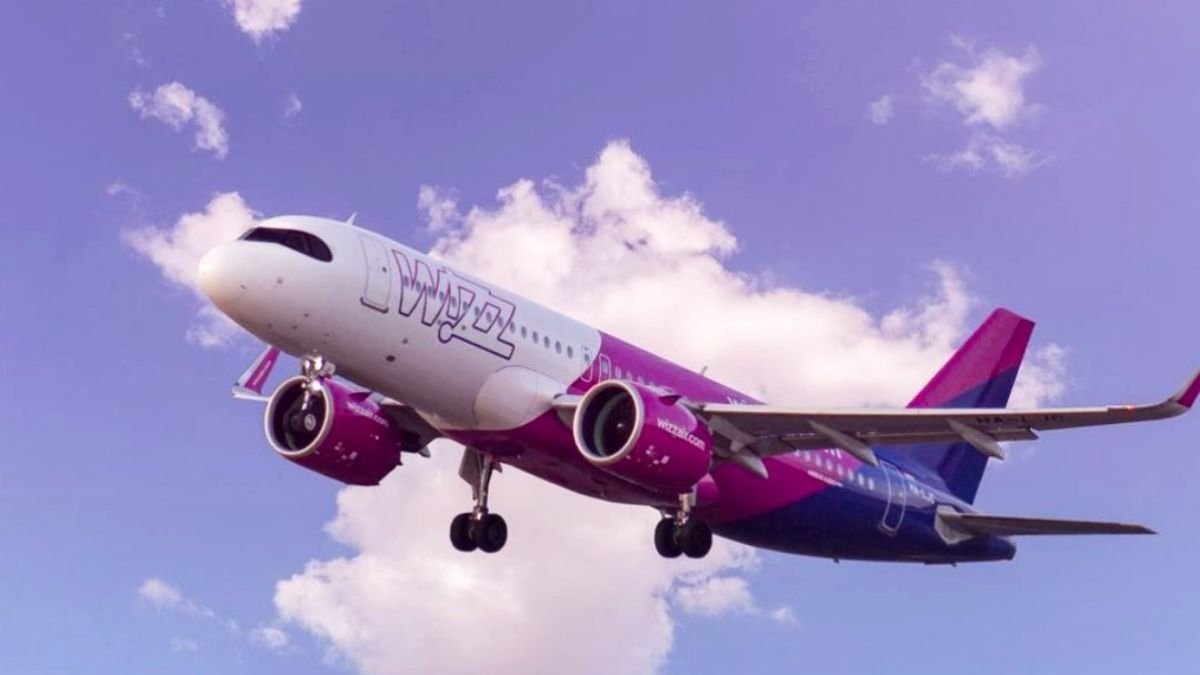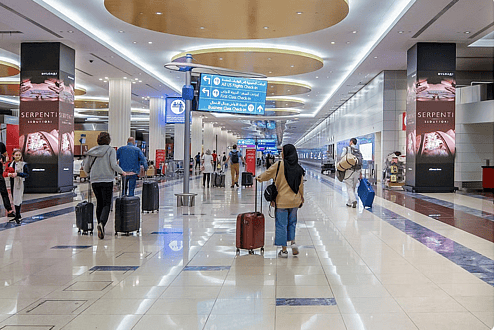Flight Buzz
Belavia to Relaunch Direct Charter Flights to Oman, Offering Belarusian Travelers Seasonal Access to Salalah Hidden Beaches and Rich Culture Starting October 24, 2025

Saturday, July 26, 2025
Starting October 24, 2025, Belavia will relaunch direct charter flights to Oman, providing Belarusian travelers with seasonal access to Salalah’s hidden beaches and rich cultural experiences. This seasonal service will run through March 2026, allowing travelers to explore one of the Arabian Peninsula’s most serene and untouched destinations. With its idyllic climate, pristine beaches, and vibrant cultural heritage, Salalah offers an affordable and tranquil alternative to more crowded tourist spots, making it an ideal getaway for those seeking a unique blend of relaxation and adventure. The return of these direct flights reflects the growing demand for this exotic destination among Belarusian tourists, offering a perfect escape to discover the charm and beauty of Oman.
Belarusian carrier Belavia to resume its charter flights to Oman, starting October 24, 2025, offering new traveling possibilities to discover a truly magical Arabian world. Running until March 2026, the seasonal service will provide Belarusian tourists a chance to explore a different and largely untrodden part of the Middle East, a place that offers beauty, culture and adventure.
The seasonal program is a continuation of Belavia’s successful launch of its inaugural charter service to Salalah in February 2025. After seeing positive demand, the airline is expanding its network to include Oman as a new destination for those looking for an affordable and tranquil holiday away from the crowds. With its rich culture, pristine beaches, and lush landscapes, Oman is increasingly becoming a go-to destination for travelers seeking an exotic yet relatively untouched locale.
Oman: A Rising Star in Middle Eastern Travel
Oman, located on the southeastern coast of the Arabian Peninsula, is known for its diverse terrain, rich heritage, and welcoming atmosphere. While many travelers are familiar with the more popular destinations in the region, Oman has maintained its charm as a hidden gem that offers something for everyone—whether it’s the allure of scenic beaches, historical landmarks, or an authentic cultural experience. For Belarusian travelers, Oman is an ideal destination that offers a peaceful retreat, far removed from the hustle and bustle of other tourist-heavy locations.
In particular, Salalah—a coastal gem located in the Dhofar region—has been gaining attention for its lush greenery and pleasant climate, making it an appealing alternative to more traditional beach destinations like the Maldives or Seychelles. Salalah’s natural beauty, paired with its unique cultural elements, makes it a perfect destination for those seeking a serene yet enriching holiday.
Salalah: A Tranquil Oasis on the Arabian Sea
Often called the “Caribbean of the East,” Salalah boasts some of the most idyllic beaches in the region, coupled with a unique climate that is cooler and more temperate compared to the rest of the Arabian Peninsula. This makes Salalah a year-round destination for those seeking a beach holiday. The region transforms during the Khareef monsoon season, where lush greenery and cooler temperatures provide an ideal escape from the intense heat of the surrounding deserts. During this season, waterfalls and vibrant flora emerge, turning Salalah into a true natural paradise.
Beyond its natural wonders, Salalah is also rich in cultural and historical significance. The city’s heritage dates back to the ancient frankincense trade, which shaped the region’s economy and culture. The ruins of Sumhuram, a historic city that thrived from the 3rd century BCE, offer a glimpse into Oman’s long-standing role in international trade. Visitors can explore Salalah’s souks, where traditional handicrafts and local spices—such as frankincense—are sold, giving tourists a chance to experience Oman’s cultural history firsthand.
Omani Coffee: A Deep-Rooted Tradition
An essential part of the Omani experience is the coffee, or qahwa. Omani coffee is traditionally brewed with spices like cardamom, saffron, and rose water, making it a unique and aromatic beverage enjoyed in social settings. It’s not just the taste but also the cultural significance of the drink that makes it an unforgettable experience for travelers. In Salalah, sipping qahwa while taking in the scenic surroundings is a ritual that encapsulates the hospitality and charm of Oman.
Oman’s coffee culture is deeply intertwined with its sense of community, where offering coffee is a symbol of hospitality and friendship. For visitors, it’s an immersive cultural experience that offers more than just a warm drink—it’s a taste of Oman’s heritage and generosity.
Belavia Expands Access to Oman
Belavia’s decision to relaunch charter flights to Salalah underscores the airline’s commitment to broadening its range of international destinations. After the success of the initial charter service in 2025, the airline is now investing in regular seasonal services to Oman, making it an easily accessible destination for Belarusian tourists. The new seasonal flights will cater to those eager to explore Oman’s unique beauty, cultural offerings, and rich history.
This move by Belavia not only benefits Belarusian travelers, but it also helps boost Oman’s growing tourism industry. With direct flights to Salalah, visitors can now easily access the city’s beaches, historical sites, and cultural landmarks, making it a convenient and attractive vacation spot. The seasonal nature of the service gives travelers plenty of time to plan their trip, taking advantage of Oman’s temperate weather during the cooler months.
Oman’s Bright Future as a Tourism Hub
With its increasing popularity as a vacation destination, Oman has all the elements needed to become a major player in global tourism. Its stunning landscapes, fascinating cultural heritage, and warm hospitality have made it a top choice for those seeking an off-the-beaten-path destination that offers both relaxation and adventure. As more travelers discover what Oman has to offer, the future of its tourism industry looks bright.
Belavia’s new charter flights to Salalah make it easier than ever for travelers to explore this hidden gem of the Arabian Peninsula. Whether visitors are looking to unwind on Salalah’s peaceful beaches, dive into the region’s rich history, or enjoy the unique cultural experiences, Oman provides a diverse range of attractions. The airline’s seasonal service ensures that travelers have plenty of opportunities to experience all that this incredible destination has to offer.
Starting October 24, 2025, Belavia will relaunch direct charter flights to Oman, offering Belarusian travelers seasonal access to Salalah’s pristine beaches and rich cultural heritage, making it an ideal destination for a unique and tranquil getaway.
From its stunning scenes of natural beauty to its cultural diversity, warm hospitality, and refreshing insouciance, Oman has everything to be the next key stop for travelers in search of a unique but easy getaway. Belarusian holidaymakers are welcomed into the Arabian wonderland with this renewed Belavia service to Salalah.
Flight Buzz
UAE Residents Rush To Book Wizz Air Budget Flights From Just AED204 Before September Exit

Abu Dhabi travellers aren’t wasting any time. With Wizz Air set to stop flying from the capital on September 1, 2025, residents are racing to grab whatever low-cost tickets are left. One-way fares start at just AED204, and for many, it’s the last chance to enjoy a budget-friendly trip before the airline pulls out of the UAE.
UAE Travellers Scramble For Wizz Air Deals Before Flights Stop In September
Your next adventure just got better!🎉 Travel between July 14th and Sep 30th, and enjoy 15% OFF on selected flights. Time to plan that getaway!🗺️https://t.co/RDiSCj4sYj pic.twitter.com/ehYZTnKv21
— Wizz Air (@wizzair) July 9, 2025
For a lot of UAE travellers, especially those based in Abu Dhabi, Wizz Air wasn’t just another airline; it was the one that made spontaneous trips possible. No extra fuss, no steep fares. If you wanted to escape for a few days without spending a fortune, it usually had you covered. A few days in Georgia? Last-minute plans to visit Armenia? Wizz Air made it doable without draining your wallet.
Now, as the airline prepares to stop operations, people are scrambling to book what could be their final trip with it. August flights are disappearing fast, with many travellers eager to make the most of these last few weeks. For fans of the airline, it’s not just about a flight; it’s a chance to revisit the freedom and spontaneity it offered, one more time.
The Most Popular Routes Flying Off the Charts
Ticket prices are doing much of the talking. These are the current one-way fares leaving from Abu Dhabi:
- Kutaisi, Georgia – AED204
- Yerevan, Armenia – AED264
- Baku, Azerbaijan – AED254
- Tashkent, Uzbekistan – AED314
- Almaty, Kazakhstan – AED404
For a lot of travellers, hopping over to Yerevan or Baku has often been more budget-friendly than spending a weekend in Dubai. That’s one big reason why flights are vanishing fast.
Almaty and Tashkent weren’t always on people’s travel lists. That’s slowly shifting now. With Wizz Air getting ready to close shop, there’s a noticeable rush. People are booking quickly, and by the looks of some travel sites, August flights are already starting to fill up.
What This Means For Travellers In The UAE
Now that it’s pulling out, the impact is real. People who once relied on those low-cost flights to lesser-known destinations are feeling the gap. The usual weekend getaway may soon come with a higher price—or fewer choices altogether. Travel experts say it’s best not to wait. Prices are climbing and availability is shrinking, with the final weeks expected to see the biggest surge in bookings.
Whether another budget airline will fill the gap remains to be seen. But for now, it’s all about squeezing in one last trip before Wizz Air officially takes off for good.
Cover Image Courtesy: Wizz Air/X
For more such snackable content, interesting discoveries and the latest updates on food, travel and experiences in your city, download the Curly Tales App. Download HERE.
First Published: July 27, 2025 11:21 AM
Flight Buzz
The Sabre: Hypersonic Plane Could Revolutionize Tourism with One Hour Flights from London to New York

Sunday, July 27, 2025
Red swap Icon – black travel across the world where time means the most valuable of assets — a revolution in interconnected international travel has made its connections. The Sabre, a hypersonic plane under development in the U.K., would reduce the time of the flight between London and New York to an hour from the current seven. What is already a super-sonic achievement also has the potential to change the face of the tourism industry if it means cutting down the time it takes to cross the Atlantic. The plane, poised to hit speeds of Mach 5 (five times the speed of sound), is being developed as part of the European Space Agency’s (ESA) Invictus programme, with a planned flight demonstration scheduled for 2031. Exciting as the news is, this leads to pondering on what the tourist industry is going to do in light of this major shift in traveling behavior.
Changing the times of travel and the dynamics of tourism
Few among travelers, business people and the aviation sector haven’t dreamed for decades of shortening the duration of flights between two of the world’s most-visited cities, London and New York. These cities are connected by commercial flights today in about 7 hours, but with the Sabre, that travel time can be significantly reduced to only 1 hour. This has profound implications for the international tourism industry. A cut in flight time of that level won’t just make international travel faster—it will make it easier.
Tourism is based upon the same convenience, and long flights tend to keep tourists apart from one another in terms of geography. Many travellers from Europe, for example, are put off by the long flight times to the US, just as American travellers take a similarly dim view of a trip to Europe. By blanketing the ocean, the Sabre would make it possible for people to travel across the Atlantic for a more convenient day trip, supporting a greater number of one-day pleasure trips rather than long-stay commitments, and injecting money into the New York and London economies.
Reviving International Tourism: Is a New Travel Trend Emerging?
Perhaps the most important thing the Sabre can do for tourism is to make last minute international travel for short periods more possible for more people. Today, long-haul flights are considered a significant commitment of time and resources. Ordinary New York–London travel is seven hours’ flight travel time plus extra hours for check-in, security, and other non-stroll-on-the-grass necessities. Shrinking that time to a mere hour means a visit from the average tourist — for a day or a weekend or even one business meeting — is never more than a few hours of travel away.
And reduced transit time might encourage a surge in weekend travel, as tourists could more easily hop between cities. Let’s say, for example, the New Yorker starts taking spur-of-the-moment weekend trips to London or the other way around. This could mean a good opportunity for cultural interchange between two great cities and their periphery. It might also make it so other cities can benefit from shortened travel windows, with the potential for travelers to more effortlessly pop on a hypersonic plane to take in several destinations as part of the same travel package, bringing international travel within the reach of a whole new group of travelers and would-be travelers.
Economic Effects: The Rise of Hypersonic Tourism
The arrival of the Sabre could unlock new opportunities for businesses in the tourism industry. As flights are reduced, the luxury of high-speed travel may grow in popularity, similar to the way premium class seats on hypersonic jets, as well as for private charters and more customized travel plans. London and New York airports could also experience an influx in passenger numbers, lured by the one-hour flight.
A hypersonic tourism boom could, however, come with challenges. It could have a dramatic impact on existing transportation modes, like long-haul commercial flights. Airlines that currently dominate the transatlantic sector would find their territory challenged by hypersonic jets, and would be forced to innovate and cut costs in order to stay competitive. This may lead to cheaper flights for passengers, driving even more accessibility to the world of travel. But the cost of running hypersonic jets could be higher at first, meaning tickets may be more expensive in the near term.
In addition, since people can travel more quickly now, visit-och-place-h. new ways— The advent of more efficient travel options could mean tourists want more out of their destinations, and cities would have to offer higher-quality experiences in less time. Tourist areas could be overrun with visitors over shorter duration even as demand for lodging, dining and services peak. This is great news for tourism, but it also means you need to have the infrastructure in place so you don´t end up trashing the town!
Technological Innovation and Sustainability of Hypersonic Transportation
In addition to the speed, the Sabre’s novel technology might also change air travel in more far-reaching ways. The plane has advanced cryogenic technology that allows it to handle the high temperatures produced by hypersonic flight. The cooling system, which rapidly cools the air rushing into the engine to reduce engine temperatures, is critical to keeping the aircraft flying in a state of readiness that could exceed 4,000 miles an hour.
These types of technology have potential to lead to even more developments in aviation. As a leap forward, the Sabre itself is promising, but other countries and companies are also developing hypersonic aircraft. This push and pull of competition in the still nascent industry might mean an ever faster and greener airplane in the works. As these advances continue, we could very well see a more sustainable mode of long-distance travel that would make air travel’s carbon footprint a thing of the past!
Obstacles to overcome: High cost, and safety issues
But there are still a few hurdles to clear before the Sabre becomes a commercial reality. Cost is one of the biggest obstacles. The aircraft is believed to cost around GBP 6 billion to develop and, though the technology promises much, it may be years before it becomes commercially viable. Safety, too, is a big issue, for such aircraft undergo tremendous friction and thermal strain. The cryogenic pre-cooler system, developed for Sabre, is fundamental to the engines, but the extended life reliability of this now fundamentally validated technology has to be demonstrated when at the ready to bear the continual day in day out use of commercial aviation.
Meanwhile, the environmental impact of doing so is still poorly understood. Faster travel also could mean less fuel used per trip, but the vast amount of energy such high speeds requires could mitigate that gain, the report found. But there will be a need for even more disruption if the Sabre is to be a viable form of sustenance for people who do not want to ride a camel.
A New Era for Global Tourism
Looking to the future, this hypersonic Sabre jet is ushering in a new age of international travel. The Sabre’s ability to revolutionize air travel, by cutting down travel time and allowing for spontaneous international trips, as well as luxury travel at high speeds, is truly mind blowing. The next 10 years will be critical to whether this technology can make good on its promises and to whether it will be accessible to more than just the premier travelers.
As it stands, the future of hypersonic travel is just over the horizon. But as the engineering, innovation and infrastructure keeps advancing, the Sabre may one day change the face of tourism, connecting cities, cultures and economies at the speed of sound.
Flight Buzz
Dh204 airfare: UAE residents rush to book budget trips before Wizz Air exits Abu Dhabi

With fares starting as low as Dh204, UAE residents are scrambling to book last-minute holidays before Wizz Air ceases operations from Abu Dhabi on September 1, 2025.
The airline’s shutdown has triggered a surge in travel bookings to popular budget-friendly destinations, including Georgia, Armenia, Azerbaijan, Uzbekistan, and Kazakhstan.
A Khaleej Times review of fares for August shows one-way economy flights from Abu Dhabi priced at:
-
Dh204 to Kutaisi (Georgia)
-
Dh264 to Yerevan (Armenia)
-
Dh254 to Baku (Azerbaijan)
-
Dh314 to Tashkent (Uzbekistan)
-
Dh404 to Almaty (Kazakhstan)
Stay up to date with the latest news. Follow KT on WhatsApp Channels.
For many UAE residents, these ultra-low fares have made short getaways accessible and affordable. But with Wizz Air’s imminent departure, frequent flyers fear this era of budget-friendly international trips may soon become a thing of the past.
“It’s rare to find international tickets for Dh204,” said Prachi Mehta, an Indian expat and graphic designer at a media agency in Dubai.
“I checked fares for Georgia and found return tickets for under Dh550. Since my daughter’s school is on break and my husband can take leave too, we are planning one last trip on Wizz Air before they stop flying.”
She shared that her family had postponed a summer trip to Delhi due to expensive fares. “This deal came at the right time, a chance to explore a new country at a low cost.”
For Mohammed Shoib Khan, a 34-year-old Pakistani engineer living in Ajman, the low-cost airline has been a game changer. “I have travelled twice to the Caucasus with friends, but couldn’t take my family because they weren’t in the UAE then,” he said. “Now that they have joined me here, I want to take them on a quick holiday before prices go up.”
With Wizz Air’s exit on the horizon, some residents are already hunting for affordable alternatives. “We are planning to travel to a new destinations before my wedding in December. We have been looking out for options of low-cost airline. Hopefully, the travel is affordable in the month of September or October,” said Mohammed Ootom, a Jordanian expat who lives in Al Nahda, Sharjah.
The sales manager at a retail store in Sahara Centre recalled how the airline enabled spontaneous travel for him and his friends. “Once, we booked a trip to Azerbaijan while sitting at a café. It cost us less than a staycation in the UAE,” Mohammed said.
“Budget airlines like Wizz Air gave many people the chance to explore new countries without breaking the bank. We need more low-cost carriers to keep that dream alive,” he added.
-

 Brand Stories6 days ago
Brand Stories6 days agoBloom Hotels: A Modern Vision of Hospitality Redefining Travel
-

 Brand Stories23 hours ago
Brand Stories23 hours agoCheQin.ai sets a new standard for hotel booking with its AI capabilities: empowering travellers to bargain, choose the best, and book with clarity.
-

 Destinations & Things To Do7 days ago
Destinations & Things To Do7 days agoUntouched Destinations: Stunning Hidden Gems You Must Visit
-

 AI in Travel7 days ago
AI in Travel7 days agoAI Travel Revolution: Must-Have Guide to the Best Experience
-

 Brand Stories3 weeks ago
Brand Stories3 weeks agoVoice AI Startup ElevenLabs Plans to Add Hubs Around the World
-

 Brand Stories2 weeks ago
Brand Stories2 weeks agoHow Elon Musk’s rogue Grok chatbot became a cautionary AI tale
-

 Asia Travel Pulse3 weeks ago
Asia Travel Pulse3 weeks agoLooking For Adventure In Asia? Here Are 7 Epic Destinations You Need To Experience At Least Once – Zee News
-

 Destinations & Things To Do19 hours ago
Destinations & Things To Do19 hours agoThis Hidden Beach in India Glows at Night-But Only in One Secret Season
-

 AI in Travel3 weeks ago
AI in Travel3 weeks ago‘Will AI take my job?’ A trip to a Beijing fortune-telling bar to see what lies ahead | China
-

 Brand Stories3 weeks ago
Brand Stories3 weeks agoChatGPT — the last of the great romantics











You must be logged in to post a comment Login